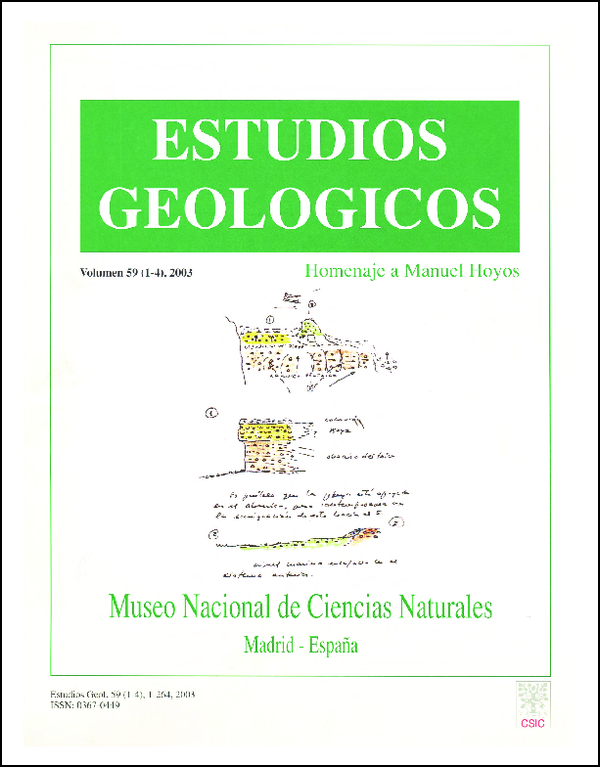Transformaciones edaficas y diageneticas de los depositos aluviales distales del mioceno de la cuenca de Madrid, area de Paracuellos de Jarama
DOI:
https://doi.org/10.3989/egeol.03591-481Keywords:
palustrine limestones, opaline chert, spheroidal dolomite, silicification of sepiolite, phreatic-vadose environmentAbstract
The distal aluvial fan and the palustrine deposits of the Paracuellos de Jarama area display a variety of specific pedogenic and diagenetic features. The processes affecting these sediments were controlled by: the sedimentary environment, the lithology and initia1 texture of the sediments and by the pedogenic-diagenetic environment in which the transformations occurred. Thus, in the distal alluvial areas (PEL profile) the first processes were the formation of thin carbonate laminae and sepiolite, further, these deposits were silicified and later, a spheroidal dolomite is formed on the opaline chert. In lacustnne environments (UPC profile), drying and root activity led to the formation of palustrine carbonates that were silicified, and the initial texture and structure were preserved. The silicification consisted on a pseudomorphic replacement that produced mainly opal whereas quartz was formed mostly by cementation and ageing of previous opal. In both environments, when the silicification occurs on sepiolite, or micrite with sepiolite, atypical microfibrous opal is produced. This replacement can lead to the release of Mg, favounng a later formation of dolomite on the opaline chert, with evidence of bacteria1 activity. Al1 these processes occurred in a shallow phreatic or even vadose environment.
Downloads
Downloads
Published
How to Cite
Issue
Section
License
Copyright (c) 2003 Consejo Superior de Investigaciones Científicas (CSIC)

This work is licensed under a Creative Commons Attribution 4.0 International License.
© CSIC. Manuscripts published in both the print and online versions of this journal are the property of the Consejo Superior de Investigaciones Científicas, and quoting this source is a requirement for any partial or full reproduction.
All contents of this electronic edition, except where otherwise noted, are distributed under a Creative Commons Attribution 4.0 International (CC BY 4.0) licence. You may read the basic information and the legal text of the licence. The indication of the CC BY 4.0 licence must be expressly stated in this way when necessary.
Self-archiving in repositories, personal webpages or similar, of any version other than the final version of the work produced by the publisher, is not allowed.















